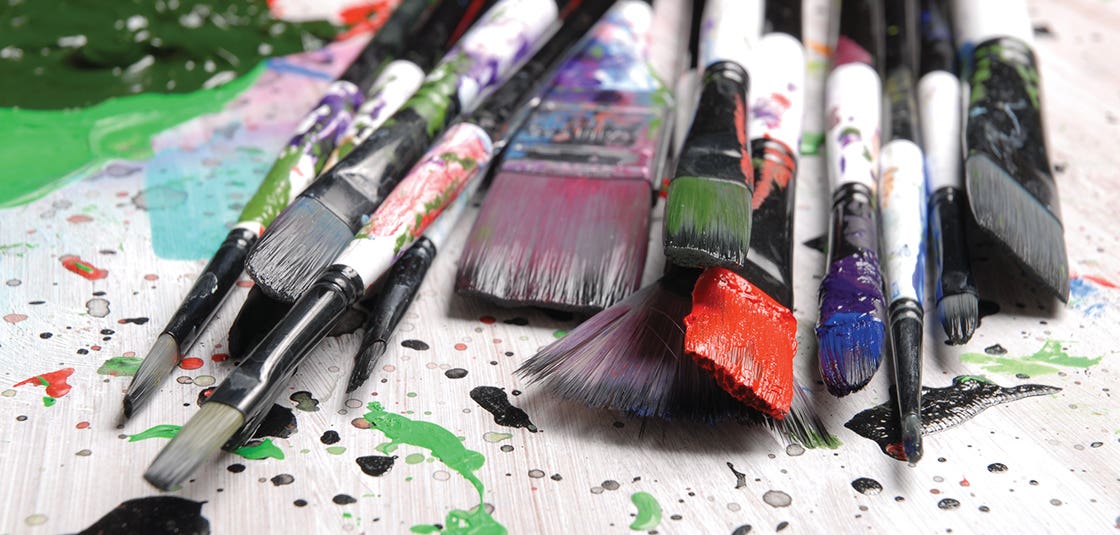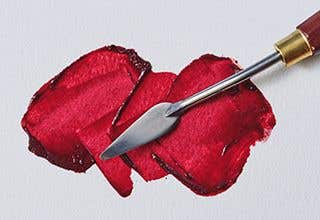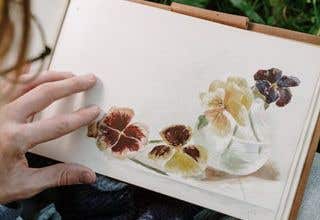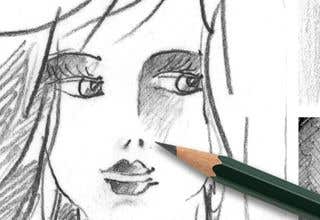Tips to Keep Your Paintbrushes Clean
The first step to well maintained brushes is to keep them moist when in use. Different mediums will require different cleaning methods (we will get into that later), but the most important thing to remember is to clean your brushes before your paint dries on the bristles.
Acrylic paint can be especially hard on brushes as it dries so quickly. If this is a problem for you, try applying some retarder to your paint. Retarder slows the drying time of paint on the palette, canvas, and also your brush.
Eckersley’s offer a great range of retarders to suit your budget. You can find them here.
Another option is to place a paper towel at the bottom of a shallow tray and pour some water onto it. You can gently lie your brush down with the bristles resting on the damp paper. By propping up the brush handle against the edge of your tray, you will ensure your handle stays dry. This method is intended to be used for a short time while painting as the bristles can permanently bend if left for prolonged periods.
While it is best to keep your brushes moist during use, it is equally important to keep the handles and ferrules dry. A ferrule is the metal band around your brush between the bristles and handle. If too much moisture is trapped in the ferrule, it can be absorbed into the wooden handle which will cause your brush to warp and the protective paint on the handle to flake away.
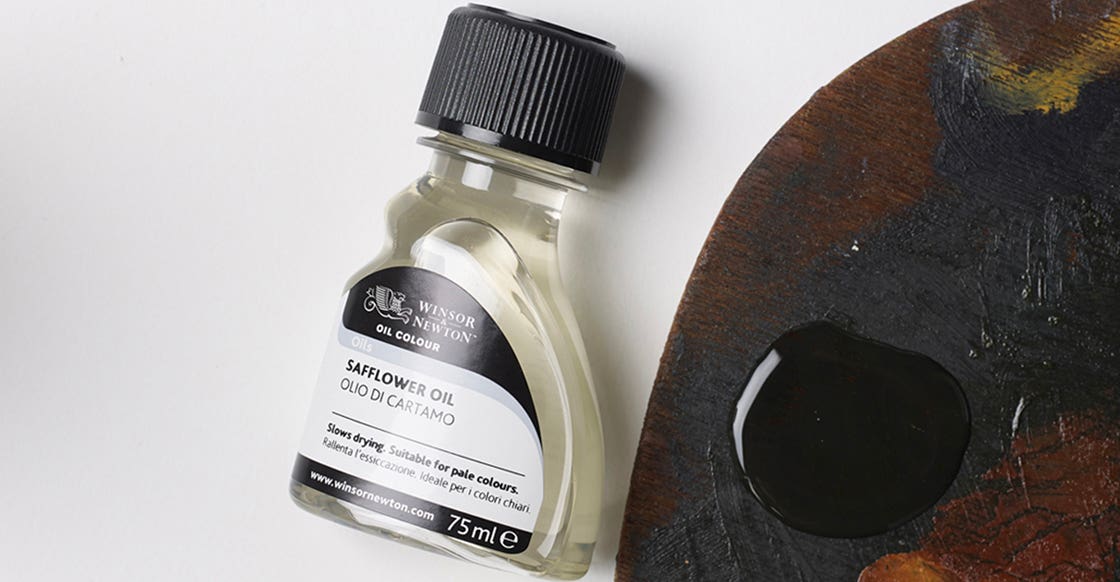
More care is needed when dealing with acrylic and oil paints. With the risk of paint drying onto the bristles and the brush becoming unusable, solvents and brush cleaners are sometimes necessary when using these mediums.
In many cases, acrylic paint will rinse out of a brush with just water, but when a stubborn pigment just will not shift, Winsor & Newton Brush Cleaner or safflower oil are both excellent options. Unlike some harsher solvent cleaners, Winsor & Newton Brush Cleaner is water-miscible and, therefore, can be used in conjunction with water. Both Winsor & Newton Brush Cleaner and safflower oil are suitable for long periods of soaking between sessions. See the video below for ideas on how to keep a brush in cleaning solution without damaging the bristles or handle. Click here to see our range of safflower oils.
When it comes to removing oil colour from brushes, Winsor & Newton Sansodor, a low odour solvent is a very effective cleaner that is suitable for artists who prefer to avoid exposure to turpentine. After wiping excess paint off the brush with a damp paper towel, a small amount of Sansodor can be added to a jar or glass. Simply push the bristles through the Sansodor, brushing up against the side of the glass to unbind the pigment from the bristles.
Once your brush appears clean and free of colour, give it the paper towel test. Brush the wet bristles against a paper towel to check for remaining pigment.
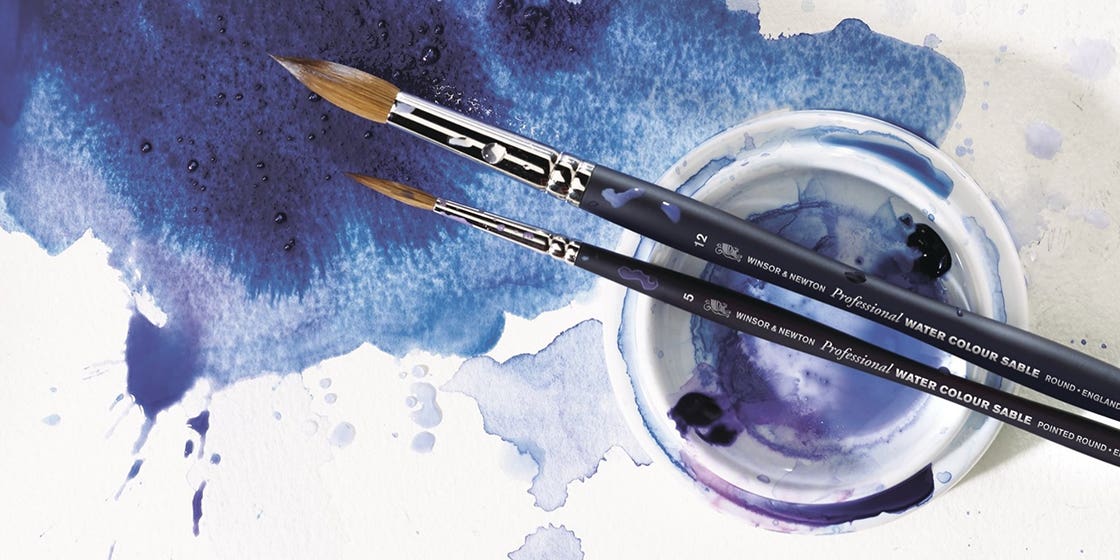
After you have cleaned your brushes, it pays to retain the shape. This can be done by wrapping the bristles in a damp paper towel (see video below for instructions) or by applying a preserver. Conditioning your brushes with a preserver will help them hold more colour and lay down a smooth, even flow. Simply lather the preserver on your brush bristles, shape them, and allow to dry. When you are ready to use your brush again, shake the powder off the bristles. We recommend General's Brush Cleaner & Preserver.
Brush cleaners can be found by clicking here.
The last thing to consider is storage. Once your brushes are clean and dry, they should be stored so their bristles remain straight and unencumbered. Here at Eckersley’s, we offer a range of storage solutions to suit any studio set up. You can find them here.
Paintbrushes are tools to treasure for years to come, they are the vessel for your artistic expression. Such important equipment deserves to be cared for. By following our guide on brush maintenance and investing in a few key accessories, your brushes will last the distance on your creative journey!
Video Tutorial

